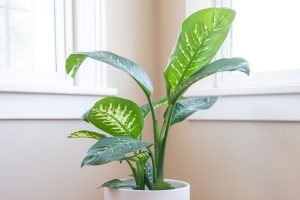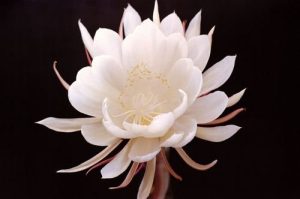Remove the Brown Palm Leaves
Should I cut off brown palm leaves? you may think. You’re not alone. Because of their exotic look and adaptability, palms are a popular option for gardens and landscapes. However, keeping them alive might be difficult, particularly when the brown leaves develop. We’ll dig into the subject of palm care in this detailed post and answer your burning question regarding whether or not you should clip those unattractive brown fronds. Let’s go on this adventure to discover the secrets of palm care and construct beautiful, healthy landscapes.
The Brown Palm Leaves Story
As you wander around your garden, appreciating the beautiful beauty, you notice that some of the palm fronds have gone brown. It’s like an unexpected plot twist. What are your next steps? Let’s start with some background information. Palm leaves become brown for a variety of reasons, and recognizing these causes is critical when deciding whether to chop them off.
Understanding the Causes of Palm Leaf Browning
Although palm trees are tough and robust, they are susceptible to pressures that might cause their leaves to turn brown. Here are some of the most popular reasons:
Natural Aging: Palm trees, like any other living entity, age naturally. Older fronds eventually become dark as they age and should be clipped to preserve the tree’s general health.
Deficiencies in Nutrients: Palms, like other plants, need critical nutrients. Browning leaves may be caused by a lack of critical nutrients such as magnesium, potassium, or manganese.
Insects, fungus, and bacteria may harm palm trees, producing discoloration and browning of the leaves. To avoid additional harm, it is critical to address these concerns as soon as possible.
Environmental Stress: Palm trees may be stressed by harsh environmental circumstances such as excessive heat, cold, or drought, resulting in brown leaves.
Incorrect or excessive trimming may harm palm plants and result in brown fronds. Pruning must be done with care and accuracy.
Cut Off Brown Palm Leaves
Now that we’ve revealed the causes of those awful brown palm leaves, the next issue is whether you should prune them. In the horticultural world, there’s a discussion regarding whether or not to cut these brown fronds, and it typically comes down to personal tastes and unique conditions.
The Benefits of Cutting Brown Palm Leaves
Pruning brown palm leaves has many benefits:
Aesthetic Appeal: Removing brown fronds will substantially improve your palm tree’s visual appeal, making it seem more lively and well-maintained.
Remove damaged Leaves to Prevent Disease Spread: If the browning is caused by a disease or insect infestation, removing damaged leaves helps keep the issue from spreading to healthy fronds.
Cutting: Cutting off dead or dying fronds allows the palm to transfer resources and energy to new growth, increasing overall tree health.
Concerns about safety: Dead palm fronds may grow heavy and dangerous over time. Pruning them lowers the likelihood of falling debris.
Should I Cut Off Brown Palm Leaves
Some gardeners, on the other hand, think that leaving brown fronds alone may be beneficial:
- Brown leaves may give some protection to the trunk of the palm under harsh weather conditions, functioning as a barrier against sunburn or frost.
- Dead fronds may provide shelter for tiny animals and insects, adding to the ecology of your garden.
- Allowing brown leaves to stay might be an enticing alternative for people who like a more natural appearance with less care.
Decision-Making Procedures
The controversy over trimming vs leaving brown palm leaves may leave you perplexed. The final selection is based on your own tastes as well as the unique demands of your palm tree. Here’s a step-by-step strategy to making an educated decision:
Examine the Health of Your Palm: Closely examine your palm tree. If the brown fronds are mostly at the bottom of the tree and don’t interfere with its overall beauty, you may leave them.
Examine for Disease or Pest Infestation: If the browning is caused by disease or pests, trim the damaged fronds to avoid additional damage.
Consider Your Garden’s Aesthetic: If you value a pristine, manicured garden, pruning brown palm leaves is probably your best option.
Priority should be given to safety: If the brown fronds pose a risk of falling and injuring someone, they must be removed immediately.
Balance Ecosystem and Aesthetics: To maintain a balance between the ecosystem and the aesthetics of your garden, prune brown fronds selectively while leaving some for wildlife habitat.
Cutting Brown Palm Leaves
If you decide that pruning is the best option for your palm tree, make sure you do it correctly to avoid further damage. For safe and effective pruning, follow these steps:
Gather the Right Tools: Sharp pruning shears, loppers, and safety equipment, such as gloves and eye protection, are required.
Examine the Fronds: Examine each frond to identify any that are dead or brown. Before pruning, make sure they are completely brown.
Cuts: Make clean cuts as close to the trunk of the tree as possible. Avoid cutting into the healthy green fronds.
Prune Sparingly: Don’t remove too many fronds at once. It’s best to prune gradually to avoid putting additional stress on the palm.
Dispose of the Debris: Properly dispose of the pruned fronds to prevent the spread of disease or pests.
Related Posts:
- Affordable tree service houston? Tree care Services
- Tree Removal
- How To Remove Ferns From Palm Trees?
Aftercare and Maintenance Brown Palm Leaves
Once you’ve pruned your palm tree, it’s essential to provide proper aftercare and ongoing maintenance. Here are some tips to ensure your palm tree continues to thrive:
Fertilize and Water: After pruning, provide your palm with a balanced fertilizer and adequate water to support new growth.
Protect Against Pests: Regularly inspect your palm tree for signs of pests or disease, and take action promptly if any issues arise.
Mulch and Shade: Apply mulch around the base of your palm to conserve moisture and provide protection from harsh weather conditions.
Regular Pruning: Continue to monitor the health of your palm and prune as needed to maintain its appearance and health.
FAQs
Why are my palm leaves turning brown?
Palm leaves can turn brown due to natural aging, nutrient deficiencies, disease or pest infestations, environmental stress, or improper pruning. Identifying the specific cause is essential for appropriate care.
Is it necessary to cut off brown palm leaves?
Whether to prune brown palm leaves depends on various factors, including the tree’s health, your garden’s aesthetics, and your safety concerns. Pruning can enhance the tree’s appearance and prevent further issues, but it’s not always mandatory.
How do I safely prune brown palm leaves?
To prune brown palm leaves safely, use sharp pruning shears, cut close to the trunk, and ensure you’re not damaging healthy fronds. Prune gradually and dispose of the debris properly to prevent the spread of disease or pests.
Can brown palm fronds be beneficial for wildlife?
Yes, leaving some brown fronds can provide habitat for small animals and insects. Balancing the ecosystem and your garden’s aesthetics is a valid approach to palm care.
What’s the aftercare required after pruning brown palm leaves?
After pruning, provide balanced fertilizer and sufficient water for new growth. Regularly inspect your palm for pests or disease and continue to maintain your palm’s health through proper care and maintenance.
Conclusion
In the world of palm care, the decision of whether to cut off brown palm leaves is a matter of balance. It’s about striking a harmonious chord between your garden’s aesthetics and the well-being of your palm tree. While brown fronds can add character and even provide shelter for wildlife, their removal can enhance the overall beauty of your garden and prevent potential problems. So, should you cut off brown palm leaves? The answer lies in your unique circumstances, your preferences, and, most importantly, the health of your palm tree. Remember that every palm tree is a living entity, and its care should be approached with care, consideration, and a touch of love. As you tend to your palm, you’ll not only transform your garden but also nurture a piece of nature that will continue to thrive for years to come.


